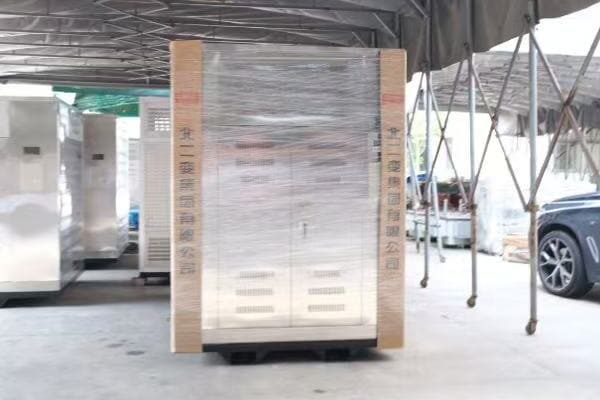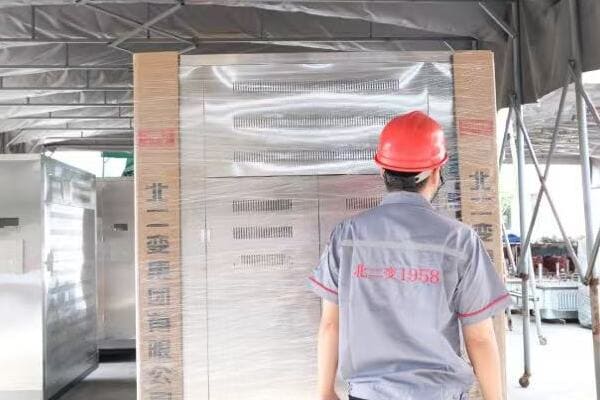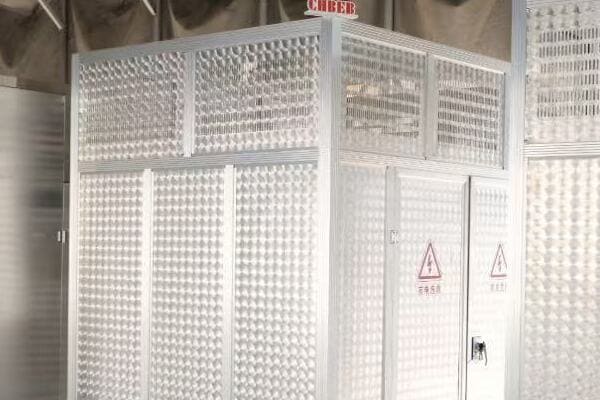Electronic Transformers: How to Choose the Best Manufacturer for Your Application?
Are you struggling to find the right electronic transformer manufacturer for your project? You’re not alone. Many engineers and procurement specialists face this challenge daily.
Choosing the best electronic transformer manufacturer involves evaluating their expertise, production capabilities, quality control, customization options, and after-sales support. It’s crucial to consider factors like the manufacturer’s experience in your specific application, their adherence to industry standards, and their ability to meet your project’s unique requirements.

In my years of experience in the power industry, I’ve learned that selecting the right manufacturer can make or break a project. Let’s dive into the key aspects you need to consider to make an informed decision.
Understanding Electronic Transformers: Types and Applications in Modern Electronics?
Have you ever wondered about the invisible components that power our electronic world? Electronic transformers are the unsung heroes behind many of our devices, but their diversity can be overwhelming.
Electronic transformers come in various types, including power transformers, audio transformers, and RF transformers. Each type serves specific applications in modern electronics, from powering your smartphone to enabling wireless communication in IoT devices.

Let me break down the main types of electronic transformers and their applications, based on my experience in the field:
Power Transformers: The Backbone of Electronic Devices
Power transformers are the workhorses of electronic devices. They convert high voltage to low voltage, making them essential in:
- Household appliances like TVs and computers
- Industrial equipment
- Power supplies for various electronic devices
I once worked on a project for a smart home system where compact power transformers were crucial. We needed a manufacturer who could provide efficient, small-form-factor transformers that could fit into sleek wall-mounted devices.
Audio Transformers: Enhancing Sound Quality
Audio transformers play a vital role in sound systems. They’re used in:
- High-fidelity audio equipment
- Professional sound systems
- Guitar amplifiers and other musical instruments
During my time consulting for a boutique audio equipment company, I learned the importance of choosing a manufacturer with expertise in audio transformers. The right transformer can make the difference between mediocre and exceptional sound quality.
RF Transformers: Enabling Wireless Communication
RF (Radio Frequency) transformers are critical in our increasingly wireless world. They’re found in:
- Smartphones and tablets
- Wi-Fi routers
- Satellite communication systems
In a recent project for a 5G infrastructure rollout, selecting a manufacturer with cutting-edge RF transformer technology was crucial for achieving the required signal quality and range.
Comparison of Electronic Transformer Types
| Type | Primary Function | Common Applications | Key Considerations |
|---|---|---|---|
| Power | Voltage conversion | Home appliances, industrial equipment | Efficiency, size, heat dissipation |
| Audio | Signal isolation and impedance matching | Hi-fi systems, musical equipment | Frequency response, distortion levels |
| RF | Impedance matching in high-frequency circuits | Wireless devices, communication systems | Bandwidth, insertion loss |
Understanding these different types and their applications is crucial when selecting a manufacturer. A company that excels in power transformers might not be the best choice for a project requiring high-performance RF transformers.
In my experience, the best approach is to look for manufacturers who specialize in the type of transformer you need. For instance, when I was working on a project for a new line of smart speakers, we chose a manufacturer known for their expertise in both power and audio transformers. This decision led to a product with both efficient power management and superior sound quality.
Remember, the right manufacturer should not only understand the technical aspects of the transformer you need but also grasp how it fits into your overall product design and functionality.
Key Factors to Consider When Evaluating Electronic Transformer Manufacturers?
Are you feeling overwhelmed by the number of electronic transformer manufacturers out there? It’s a common challenge, but knowing what to look for can make all the difference.
When evaluating electronic transformer manufacturers, focus on their industry experience, technical expertise, production capabilities, quality control processes, and customer service. These factors are crucial in ensuring you get a reliable product that meets your specific needs.

From my years in the industry, I’ve learned that choosing the right manufacturer involves more than just comparing prices. Let’s explore the key factors you should consider:
Industry Experience and Reputation
A manufacturer’s track record speaks volumes. Look for:
- Years in business
- Client testimonials and case studies
- Industry recognition and awards
I once worked with a startup that chose a new manufacturer based solely on price. The result? Delays and quality issues that could have been avoided with a more established partner.
Technical Expertise and Innovation
The best manufacturers are those that stay ahead of the curve. Consider:
- R&D investments
- Patents and proprietary technologies
- Participation in industry standards development
During a project for a renewable energy system, we partnered with a manufacturer known for their innovative approach to transformer design. Their expertise in high-efficiency transformers significantly improved our system’s overall performance.
Production Capabilities
Ensure the manufacturer can meet your volume and timeline requirements:
- Production capacity
- Flexibility in production scheduling
- Ability to scale production up or down
I’ve seen projects delayed because the chosen manufacturer couldn’t ramp up production to meet unexpected demand. It’s crucial to discuss potential volume changes upfront.
Quality Control Processes
Quality should never be compromised. Look for:
- ISO certifications
- In-house testing facilities
- Documented quality control procedures
On a critical aerospace project, our team selected a manufacturer with rigorous quality control processes. Their attention to detail ensured our transformers met the stringent requirements of the aerospace industry.
Customer Service and Support
Good support can make your project run smoothly:
- Responsive communication
- Technical support availability
- Flexibility in addressing issues
I once worked with a manufacturer who provided exceptional support during a complex custom transformer design. Their willingness to collaborate closely with our team was invaluable.
Comparison of Manufacturer Evaluation Factors
| Factor | Why It’s Important | What to Look For |
|---|---|---|
| Experience | Indicates reliability and expertise | Years in business, successful projects |
| Innovation | Ensures access to latest technologies | R&D investments, patents |
| Production | Meets your project needs | Capacity, flexibility, scalability |
| Quality Control | Guarantees product reliability | Certifications, testing procedures |
| Customer Support | Facilitates smooth project execution | Responsiveness, technical expertise |
In my experience, the best approach is to create a weighted scorecard based on these factors. For instance, in a recent project for a medical device, we prioritized quality control and technical expertise over production volume, given the critical nature of the application.
Remember, the right manufacturer should feel like a partner in your project, not just a supplier. They should be willing to understand your specific needs and work with you to find the best solutions.
Quality Assurance and Production Capabilities: Ensuring Reliability in Your Transformer Choice?
Have you ever wondered why some electronic transformers last for years while others fail prematurely? The answer often lies in the quality assurance and production capabilities of the manufacturer.
Quality assurance in electronic transformer manufacturing involves rigorous testing, adherence to international standards, and consistent production processes. A manufacturer’s production capabilities, including their equipment, workforce skills, and capacity, directly impact the reliability and consistency of their transformers.

In my years overseeing various electronic projects, I’ve learned that the quality and reliability of transformers can make or break a product. Let’s delve into what you should look for:
Quality Assurance Processes
A robust quality assurance system is crucial. Key elements include:
- Incoming Material Inspection: Ensuring raw materials meet specifications
- In-Process Quality Checks: Monitoring quality at each production stage
- Final Product Testing: Comprehensive testing of finished transformers
I once visited a manufacturer who allowed me to observe their quality control process. Their attention to detail, from core assembly to final testing, was impressive and reflected in the consistently high quality of their products.
Adherence to International Standards
Look for manufacturers who comply with relevant standards:
- ISO 9001 for quality management systems
- Industry-specific standards (e.g., UL for safety, IEEE for performance)
- Environmental standards like RoHS and REACH
In a project for a global electronics brand, we chose a manufacturer certified to multiple international standards. This ensured our transformers met regulatory requirements in various markets, simplifying our global product launch.
Production Capabilities
Assess the manufacturer’s ability to meet your needs:
- Manufacturing Equipment: State-of-the-art machinery for precision and efficiency
- Production Capacity: Ability to handle your volume requirements
- Flexibility: Capability to adjust production for varying demands
During a large-scale industrial project, our chosen manufacturer’s advanced winding machines and automated testing equipment ensured consistent quality across a high-volume order.
Workforce Expertise
The skill of the workforce is as important as the equipment:
- Training Programs: Ongoing skill development for workers
- Experience Levels: A mix of seasoned experts and fresh talent
- Quality Culture: A workforce committed to quality at every level
I’ve found that manufacturers with strong training programs and a culture of quality tend to produce more reliable transformers consistently.
Comparison of Quality Assurance and Production Factors
| Factor | Impact on Reliability | What to Look For |
|---|---|---|
| Quality Processes | Ensures consistent product quality | Comprehensive testing, documented procedures |
| Standards Compliance | Meets regulatory and performance requirements | Relevant certifications, test reports |
| Production Equipment | Affects precision and consistency | Modern machinery, maintenance records |
| Workforce Skills | Influences product quality and innovation | Training programs, employee retention rates |
In my experience, it’s crucial to visit the manufacturer’s facility if possible. During one such visit, I noticed how a manufacturer’s organized production floor and engaged workforce translated into superior product quality.
Remember, a manufacturer with strong quality assurance and production capabilities is more likely to deliver transformers that meet your specifications consistently. This reliability can save you time and money in the long run by reducing failures and warranty claims.
Custom vs. Standard Transformers: Navigating Options with Manufacturers?
Are you torn between choosing a standard transformer or opting for a custom solution? This decision can significantly impact your project’s success and cost-effectiveness.
Manufacturers offer both standard and custom electronic transformers. Standard transformers are cost-effective and readily available, suitable for common applications. Custom transformers are tailored to specific requirements, ideal for unique or high-performance needs, but often come with higher costs and longer lead times.

Throughout my career, I’ve faced this decision many times. Let me share insights to help you navigate this choice:
Understanding Standard Transformers
Standard transformers are off-the-shelf solutions:
- Cost-Effective: Mass production reduces costs
- Quick Availability: Often in stock or with short lead times
- Proven Reliability: Extensively tested and refined designs
In a recent project for a consumer electronics product, we chose standard transformers. The high volume and tight timeline made them the perfect fit, saving both time and money.
Exploring Custom Transformers
Custom transformers are tailored to specific needs:
- Optimized Performance: Designed for your exact requirements
- Unique Specifications: Can meet non-standard voltage, size, or environmental needs
- Intellectual Property Protection: Exclusive designs for proprietary technology
For a specialized medical device project, we opted for custom transformers. The unique power requirements and space constraints necessitated a tailored solution.
Factors to Consider in Your Decision
When choosing between custom and standard, consider:
- Application Requirements: How specific are your needs?
- Budget Constraints: Custom solutions often cost more initially
- Time to Market: Standard options can speed up your project timeline
- Production Volume: Custom may be more cost-effective for high volumes
Working with Manufacturers
Engage with manufacturers to explore your options:
- Discuss Your Needs: Clearly communicate your requirements
- Ask for Recommendations: Experienced manufacturers can guide you to the best solution
- Consider Modifications: Some manufacturers offer modified standard transformers as a middle ground
I once worked with a manufacturer who suggested a modified standard transformer for an automotive project. This approach gave us the performance we needed without the full cost of a custom design.
Comparison of Custom vs. Standard Transformers
| Aspect | Standard Transformers | Custom Transformers |
|---|---|---|
| Cost | Generally lower | Higher, especially for low volumes |
| Lead Time | Shorter | Longer due to design and testing |
| Performance | Good for common applications | Optimized for specific needs |
| Flexibility | Limited to available specifications | Highly flexible design |
| Minimum Order Quantity | Often lower | Usually higher |
In my experience, the best approach is to start by thoroughly evaluating standard options. I’ve found that in many cases, a standard transformer or a slightly modified version can meet project needs effectively.
For instance, in an IoT device project, we initially considered a custom transformer. However, after consulting with the manufacturer, we discovered a standard model that met 90% of our requirements. With minor modifications, it perfectly fit our needs, saving both time and development costs.
Remember, a good manufacturer should be able to guide you through this decision process. They should help you weigh the trade-offs between performance, cost, and time to market. Don’t hesitate to ask for samples or prototypes to test in your application before making a final decision.
Beyond the Product: Assessing Technical Support, After-Sales Service, and Innovation in Transformer Manufacturing?
Have you ever considered that choosing a transformer manufacturer is about more than just the product itself? The support and innovation behind the transformer can be just as crucial to your project’s success.
When selecting an electronic transformer manufacturer, consider their technical support, after-sales service, and commitment to innovation. These factors ensure you receive ongoing assistance, prompt problem resolution, and access to cutting-edge technology, all of which can significantly impact your project’s long-term success.

In my years working with various manufacturers, I’ve learned that these aspects can make a huge difference. Let’s explore why they’re so important:
Technical Support: Your Partner in Problem-Solving
Good technical support can be a lifesaver. Look for:
- Responsive Communication: Quick replies to your queries
- Expertise: Support staff with deep technical knowledge
- Design Assistance: Help in selecting or customizing the right transformer
I once worked on a project where we encountered unexpected interference issues. The manufacturer’s technical team worked tirelessly with us, even adjusting the transformer design to solve the problem. This level of support was invaluable.
After-Sales Service: Ensuring Long-Term Success
After-sales service is crucial for ongoing operations:
- Warranty Support: Clear policies and efficient handling of claims
- Spare Parts Availability: Easy access to replacements when needed
- Troubleshooting Assistance: Help in diagnosing and resolving issues
In a large industrial installation, our chosen manufacturer provided exceptional after-sales support. When a transformer failed unexpectedly, they not only replaced it quickly but also helped us identify and correct the underlying issue in our system design.
Innovation: Staying Ahead of the Curve
A manufacturer’s commitment to innovation can benefit your projects:
- R&D Investments: Ongoing research for improved products
- New Technologies: Access to the latest in transformer design
- Custom Solutions: Ability to develop innovative solutions for unique challenges
We once partnered with a manufacturer known for their innovative approach. Their newly developed high-frequency transformer technology allowed us to significantly reduce the size of our portable medical device, giving us a competitive edge in the market.
Evaluating These Aspects
When assessing a manufacturer, consider:
- Asking for case studies or references related to support and innovation
- Inquiring about their R&D budget and recent technological advancements
- Testing their technical support with some challenging questions
Comparison of Support and Innovation Factors
| Aspect | Why It’s Important | What to Look For |
|---|---|---|
| Technical Support | Ensures smooth project implementation | Response time, expertise level |
| After-Sales Service | Guarantees long-term reliability | Warranty terms, spare parts availability |
| Innovation | Provides access to cutting-edge solutions | R&D investments, new product launches |
In my experience, these factors can significantly impact your project’s success. For instance, during a complex industrial automation project, we chose a manufacturer not just for their product quality, but for their exceptional technical support and innovative approach. This decision paid off when we faced an unexpected challenge:
Our system was experiencing intermittent failures that were difficult to diagnose. The manufacturer’s technical team not only helped us troubleshoot the issue but also suggested an innovative solution using their latest transformer technology. This not only solved our immediate problem but also improved the overall efficiency of our system.
The Value of Long-Term Partnerships
When you find a manufacturer that excels in these areas, consider building a long-term partnership:
- Collaborative Development: Work together on future projects
- Early Access to New Technologies: Be among the first to benefit from innovations
- Customized Support: Develop a support system tailored to your needs
I’ve maintained a relationship with a particular manufacturer for over a decade. This partnership has given us priority access to their latest innovations and customized support that understands our unique needs.
Balancing Cost with Value
While it’s tempting to focus solely on the upfront cost of transformers, consider the long-term value:
- Reduced Downtime: Prompt support minimizes operational disruptions
- Improved Performance: Access to innovative solutions enhances your products
- Lower Total Cost of Ownership: Reliable products and good support reduce long-term costs
In a recent project, we opted for a slightly more expensive manufacturer known for their excellent support and innovation. This decision ultimately saved us money by reducing downtime and improving our product’s performance.
Tips for Assessing Support and Innovation
- Request a Technical Consultation: Engage with their support team before making a decision
- Ask About Recent Innovations: Inquire about new products or technologies they’ve developed
- Check Their Training and Resources: Look for manufacturers who offer ongoing education and resources
Remember, the best manufacturer for your project is one that sees themselves as your partner in success, not just a supplier. They should be invested in understanding your challenges and helping you overcome them, both now and in the future.
Conclusion
Choosing the right electronic transformer manufacturer is crucial for project success. Consider their expertise, production capabilities, quality control, customization options, technical support, after-sales service, and innovation. The best choice balances all these factors to meet your specific needs.
Free CHBEB Transformer Catalog Download
Get the full range of CHBEB transformers in one catalog.
Includes oil-immersed, dry-type, pad-mounted, and custom solutions.
Quick Message
Request A free quote
We'd like to work with you
- +86 15558785111
- [email protected]
- +86 15558785111
What We Do
CHINA BEI ER BIAN (CHBEB) GROUP, with 218 million in registered capital, originated from Beijing Beierbian Transformer Group. Headquartered in Beijing for R&D, it operates major production bases in Nanjing and Yueqing, producing high-quality products.
Latest Product
address
BeiJing
No 3,RongJing East Road,BeiJing Economic Technological Development Area,BeiJing,China
JiangSu
No 7️Xiangfeng Road,Jiangning,NanJing,JiangSu,China
WenZhou
No.211, Wei 16 Road, Industrial Zone, Yueqing, Wenzhou, Zhejiang, China.
XiangYang Industrial Zone ,YueQing,WenZhou,ZheJiang,China
contact us
- [email protected]
- +86 13057780111
- +86 13057780111
- +86 15558785111
Copyright © Bei Er Bian Group


